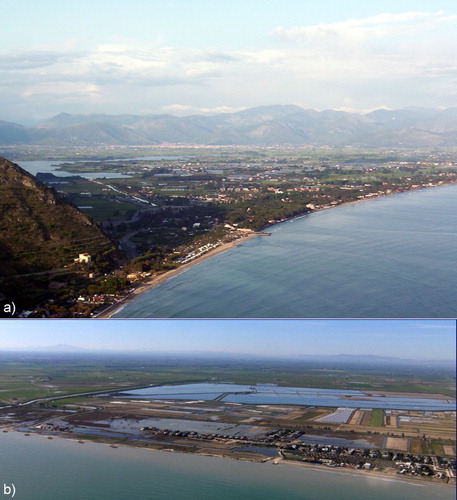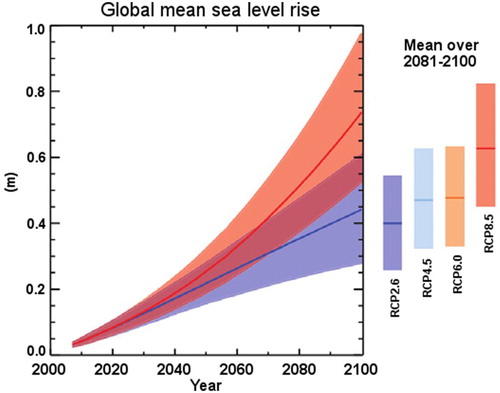Figures & data
Figure 1. The Italian coastal areas are characterized by important human settlements that are sensitive to sea level rise: (a) the Fondi Plain, near Latina (Latium, Italy) is one of the 33 areas of the Italian coastal zones prone to marine flooding (CitationLambeck et al., 2011) (Photo G. Mastronuzzi, 2005); (b) the Mouth of Carapelle river, near Foggia (Apulia, Italy) with damaged wetlands after the sea-storms occurred on February/March 2009 (Photo by M. Caldara, 2009).

Figure 3. The four Italian areas investigated in this study, characterized by coastal plains and geo-diversity.


